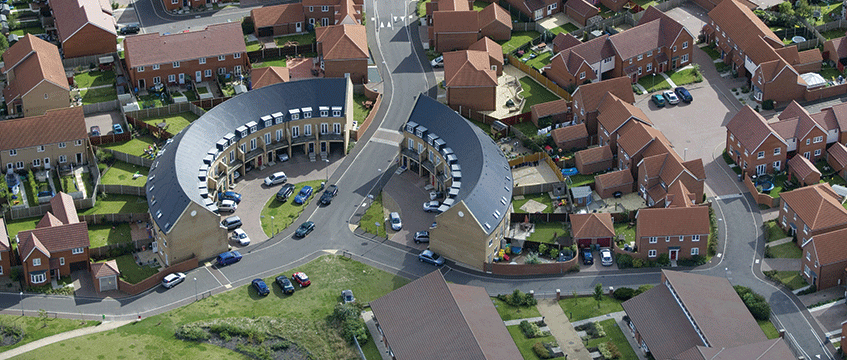The number of residential planning applications has slumped by 43% over the past two years, as businesses pull back from new development amid market uncertainty and planning challenges.
There were 34,321 residential planning applications in 2020, down from 60,393 in 2018, exclusive data from Radius Data Exchange reveals. The total number of homes proposed fell by 39% to just 637,792 homes.
Industry experts say the numbers reflect a drop in market activity and the impact of lengthy and costly planning processes on companies ranging from SMEs to large land promoters. The Covid-19 pandemic and Brexit have only added to developer apprehension.
Alex Harrington-Griffin, chief executive of TrustedLand, which works with SME residential developers, said: “Developers have been saying to us that they want to wait and see what happens.
“They don’t want to pay half a million pounds in planning fees across several sites, not knowing whether they are going to be able to sell their site.”
Harrington-Griffin said agile SME developers are pulling the brakes on new schemes where they cannot see a viable exit route. “The last thing most of them will do is put themselves under extra pressure.”
Jonathan Vandermolen, chief executive at London-based residential agent Vandermolen Real Estate, said: “A lot of people have lost the stomach for the battle because it is a battle to get planning on anything.”
He said a peak in 2018 reflected a surge in buying and developing during the preceding two years, but that new drops come as the pandemic and planning dampen developer appetite.
Vandermolen said pre-application processes, the cost of capital, lengthy timetables and affordable housing demands are all squeezing development. “As the market has started to tail off, the planning process is also taking longer, viability is being questioned,” he added.
“The planning system wasn’t in a great situation before and it is even worse now because of the pandemic,” he added. “[Local authority planners] are all hiding behind lockdown and working from home and they are less accessible.”
Barton Willmore partner Robin Shepherd said: “What does this mean for an already ambitious challenge of 300,000 homes a year? We are not getting anywhere near that and it’s not as if that shortfall will be lost.”
Shepherd called on councils and the government to take action to reassure nervous developers considering new strategies.
“Councils and government have to address that lack of confidence to say ‘Yes, we still want this to happen’. I have not heard many councils say ‘Yes, we are still open for business, we want this to come forward quicker than before’” he said.
“There is a job to be done to assure housebuilders and developers that they are going to get the right outcome.”
To send feedback, e-mail emma.rosser@egi.co.uk or tweet @EmmaARosser or @estatesgazette











